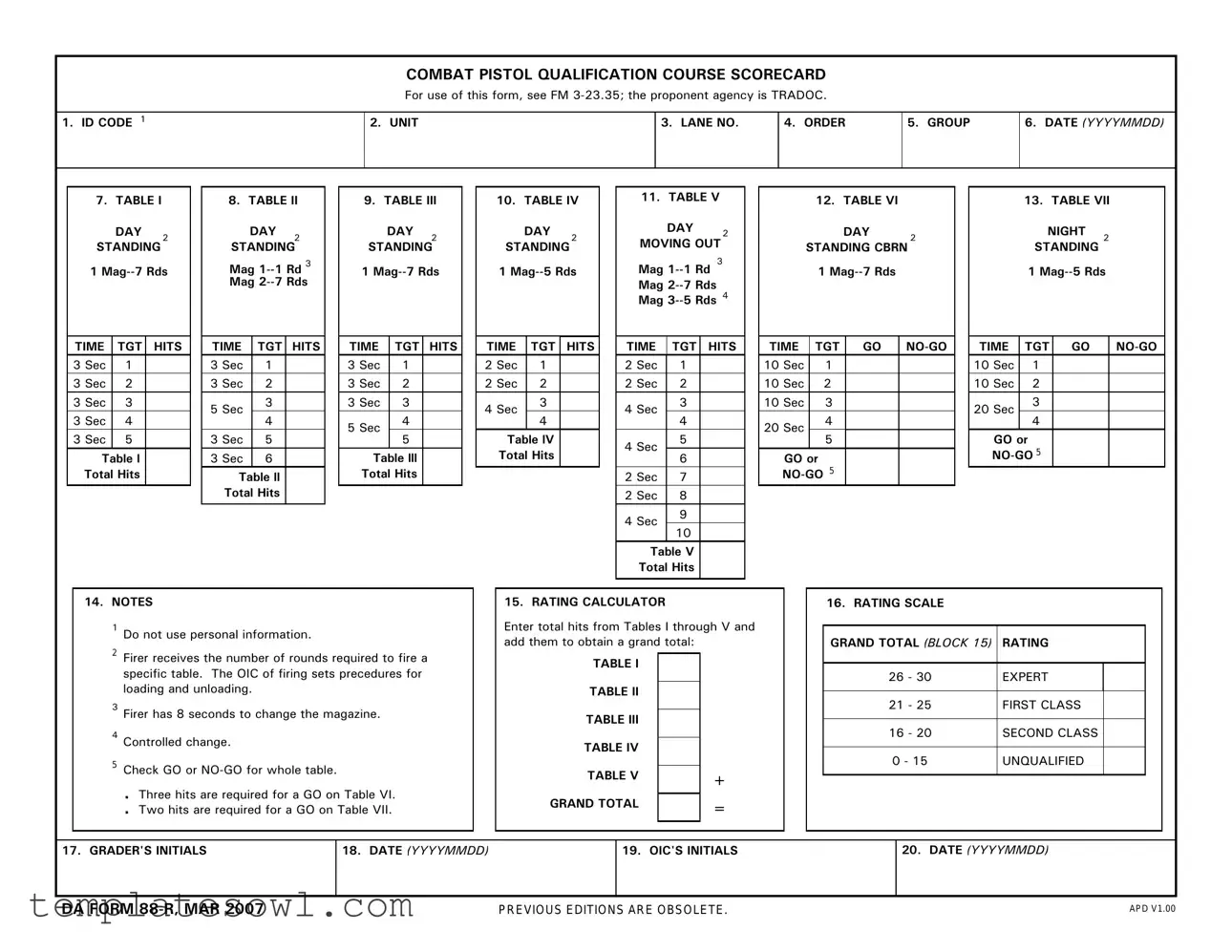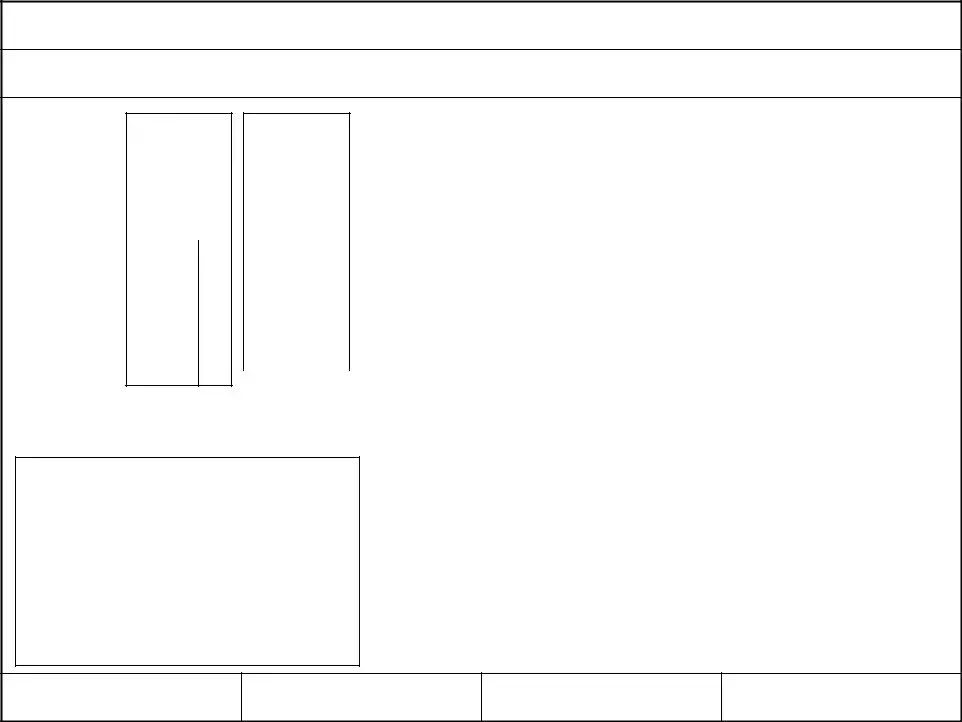What is the purpose of the DA 88 R form?
The DA 88 R form is specifically designed for recording results during the Combat Pistol Qualification Course. It details each shooter's performance across various qualifications, helping assess their proficiency with a pistol. The form breaks down different tables and scenarios, such as shooting positions and target timing, providing a structured way to evaluate and document qualifications.
What information is required to complete the form?
To fill out the DA 88 R form, you need to provide essential information, including the unit name, shooter ID code, firing lane number, date, and the total hits for various tables. Each table has specific shooting requirements, which need to be accurately recorded. It's crucial to follow the guidelines closely to ensure that the data is complete and properly reflects performance.
How is the scoring calculated on the DA 88 R form?
The scoring on the DA 88 R form is calculated based on the number of hits recorded in each table. After documenting the total hits from Tables I through V, you would add these numbers together to get a grand total. This grand total will determine the shooter’s rating, which ranges from Expert to Unqualified, depending on performance.
What are the rating criteria based on total hits?
The ratings are based on the grand total of hits from the tables. The criteria are as follows: 26-30 hits qualifies as Expert, 21-25 as First Class, 16-20 as Second Class, and 0-15 as Unqualified. Understanding these thresholds is important for shooters aiming for specific qualifications.
Are there any specific guidelines for operating the equipment used during scoring?
Yes, the DA 88 R form includes several operational guidelines. For example, it emphasizes the prohibition of using personal information. Additionally, the Officer in Charge (OIC) will set procedures for loading and unloading magazines. Shooters are also allotted a specific amount of time to change the magazine, which is crucial for scoring their performance accurately.
What happens if a shooter does not meet the GO requirements?
If a shooter fails to meet the GO requirements, as indicated on the form, it will be marked as a NO-GO for the relevant tables. Specifically, three hits are required for a GO on Table VI, and two hits for Table VII. This outcome signals that the shooter needs further training or practice to reach the necessary qualification level.

